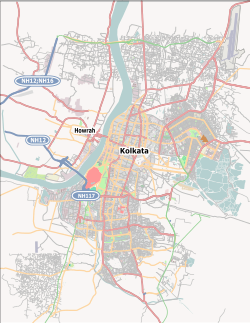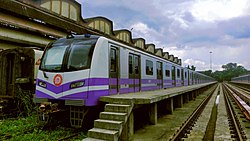Noapara is the largest elevated metro station on the North-South corridor of the Blue Line of Kolkata Metro in Noapara, Baranagar, Kolkata, West Bengal, India. [1] It opened on 10 July 2013. [2] The station is an interchange where it hosts Yellow Line of Kolkata Metro till Jai Hind (Dum Dum Airport). [3] [4]









